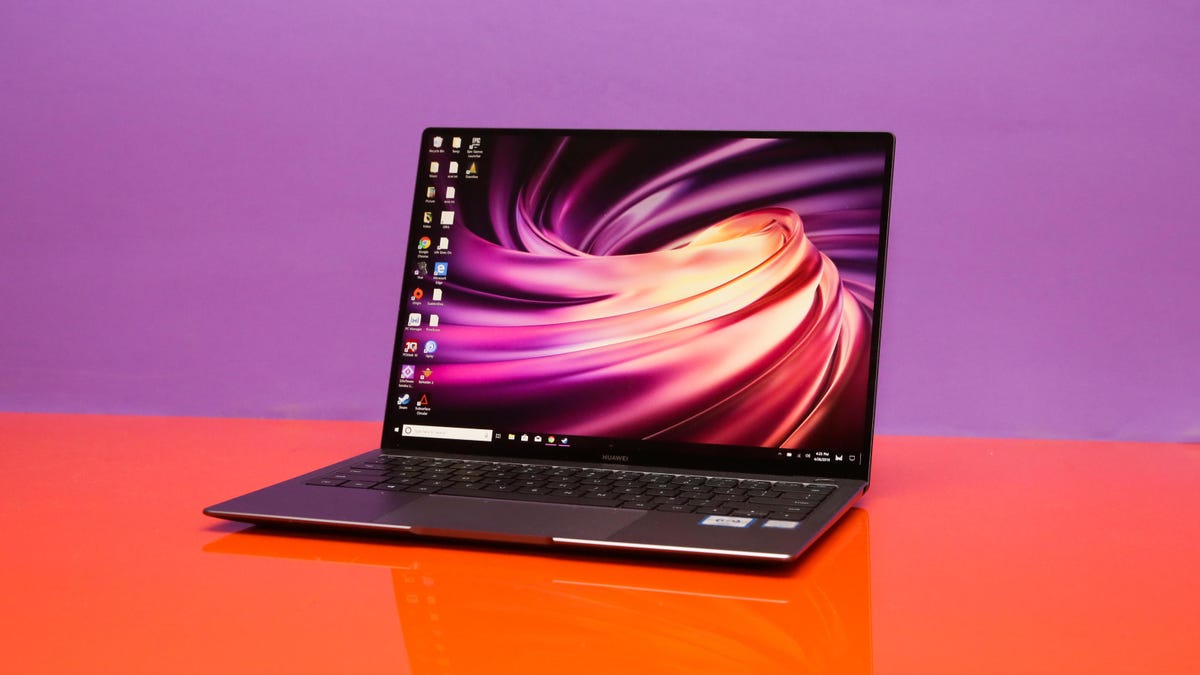What the Huawei Matebook X Pro tells us about Nvidia MX250 graphics
Is the baby step from Intel's integrated graphics to Nvidia's low-power discrete graphics a useful upgrade?

The 2019 model of the Huawei MateBook X Pro incorporates the Nvidia MX250 graphics processor.
Light, powerful or affordable: Pick two. Given the state of technology today, you can't get all three. Nvidia's MX line of mobile graphics processors (GPUs) is designed as a compromise between Intel's lackluster integrated graphics and more power- and space-hungry discrete graphics like Nvidia's GTX mobile chips to deliver on weight and power without punishing creators and gamers who need the extra oomph too heavily on cost.
The question is, how much of a compromise? We took a look at some of the systems we've benchmarked and the new MX250-based version of the Huawei MateBook X Pro to try to figure that out.
Nvidia's current MX lineup consists of the MX230 and MX250. Laptops incorporating the chip were announced by all the usual suspects in early 2019 as updates to their existing MX150 models -- Acer Aspire 5, HP Envy 17, Dell Inspiron 15 7000 and the Huawei MateBook X Pro, to name a handful -- though none of them are available to buy as yet. (We haven't heard about anyone using the MX230.)
Both GPUs are very modest upgrades of the MX130 and MX150, respectively, and that means you really don't need to wait for the newer models if you're in the market for a new laptop now. It also means that when you inevitably start seeing discounts on the MX150 cohort, you should feel comfortable snapping up a bargain.
There's a bit of a twist when looking at laptops incorporating MX-series GPUs, though. Each comes in two different versions: a 10-watt part that goes in the thinnest of ultrathins and a 25-watt part for laptops a bit thicker; the higher-power version supports slightly faster clock speeds so it should theoretically deliver somewhat better performance.
Also, both generations of the MX series are based on Nvidia's Pascal-architecture GP108 graphics core, which makes them equivalent to the GT 1030 desktop card. And like that card, it can support up to GDDR5 memory -- but is usually paired with GDDR4, which can bog down performance significantly.
Unfortunately, you don't know what you're getting until you've gotten it. Laptop manufacturers don't tell you, and there's no branding, such as "Max-Q." You have to dig into the details of the system to even find that information.
How much faster?
Extrapolating from the high-power MX150 part in the Razer Blade Stealth we tested, I'd place the differential between low- and high-power versions at about 25%. (But stick a pin in "performance differential," because I'll come back to what that means in practice.) You do seem to sacrifice battery life, though.
The MX250 is definitely faster than Intel's integrated graphics, though it's hard to say exactly how much for gaming because you can't even run most of the games on the integrated GPU. I think the bigger point here is that for some games, such as Limbo, it tips your system over the line between "can't run it" and "at least meets the minimum requirements."
For OpenGL-supporting graphics work, it makes a notable difference, too, if you're working with simple 3D models, applying complex filters on photos or working with low-res video.
The generational differences are a lot smaller, though. For example, on the Deus Ex and Time Spy (a measure of DirectX 12 performance) benchmarks we saw a bump of roughly 20% -- but that translates (in the case of Deus Ex) to an increase to 15fps from 12fps. So unplayable game is still unplayable. I dropped the 1080p quality settings down to low for the newer model and the gap increased to 45% better frame rate: 22.4fps. Still unplayably slow.
In contrast, you'll get way better performance -- and be able to play a lot more games -- by simply stepping up to a laptop with GTX 1050 graphics, or its replacement, the GTX 1650.
While no one would ever play Deus Ex: Mankind Divided on the MateBook , it does illustrate the point that year-over-year improvements which may sound big can be illusory. But it may move the line an inch between "I give up" and "I can live with this" for your favorite platformer.
Performance tests
Geekbench 4 (multicore)
Cinebench R15 OpenGL (fps)
Deus Ex: Mankind Divided gaming test
Deus Ex: Mankind Divided gaming test
System Configurations
| Asus Zenbook Flip 14 | Microsoft Windows 10 Home (64-bit); 1.8GHz Intel Core i7-8550U; 16GB DDR3 SDRAM 2,133MHz; 2GB Nvidia GeForce MX150 Graphics; 512GB SSD |
|---|---|
| HP Spectre x360 15 (2018) | Microsoft Windows 10 Home (64-bit); 3.1GHz Intel Core i7-8705G; 16GB DDR4 SDRAM 2,400MHz; 4GB AMD Radeon RX Vega M GL Graphics; 512GB SSD |
| Huawei Matebook X Pro (2018) | Microsoft Windows 10 Home (64-bit); 1.8GHz Intel Core i7-8550U; 16GB DDR3 SDRAM 2,133MHz; 2GB Nvidia GeForce MX150 Graphics; 512GB SSD |
| Huawei Matebook X Pro (2019) | Microsoft Windows 10 Home (64-bit); 1.8GHz Intel Core i7-8565U; 16GB DDR4 SDRAM 2,133MHz; 2GB Nvidia GeForce MX250 Graphics; 1TB SSD |
| LG Gram 14 2-in-1 | Microsoft Windows 10 Home (64-bit); 1.8GHz Intel Core i7-8565U; 16GB DDR4 SDRAM 2,400MHz; 128MB (dedicated) Intel HD Graphics 620; 512GB SSD |
| Microsoft Surface Book 2 | Microsoft Windows 10 Pro (64-bit); 1.9GHz Intel Core i7-8650U; 16GB DDR4 SDRAM 1,866MHz; 6GB Nvidia GeForce GTX 1060 ; 1TB SSD |
| Razer Blade Stealth (2019) | Microsoft Windows 10 Home (64-bit); 1.8GHz Intel Core i7-8565U; 16GB DDR3 SDRAM 2,133MHz; 2GB Nvidia GeForce MX150 Graphics; 512GB SSD |

